Today marks 20 years since the World Trade Center in New York City was destroyed in a terrorist attack. In the final part of our 9/11 anniversary series, architects share their memories of the traumatic event and the impact that it had on architecture.
On 11 September 2001, the 110-storey World Trade Center towers in lower Manhattan, New York City, were struck by two planes hijacked by Al-Qaeda terrorists.
The attack, which claimed the lives of 2,753 people, sent shockwaves across the world and led many people to question the future of New York and high-rise buildings.
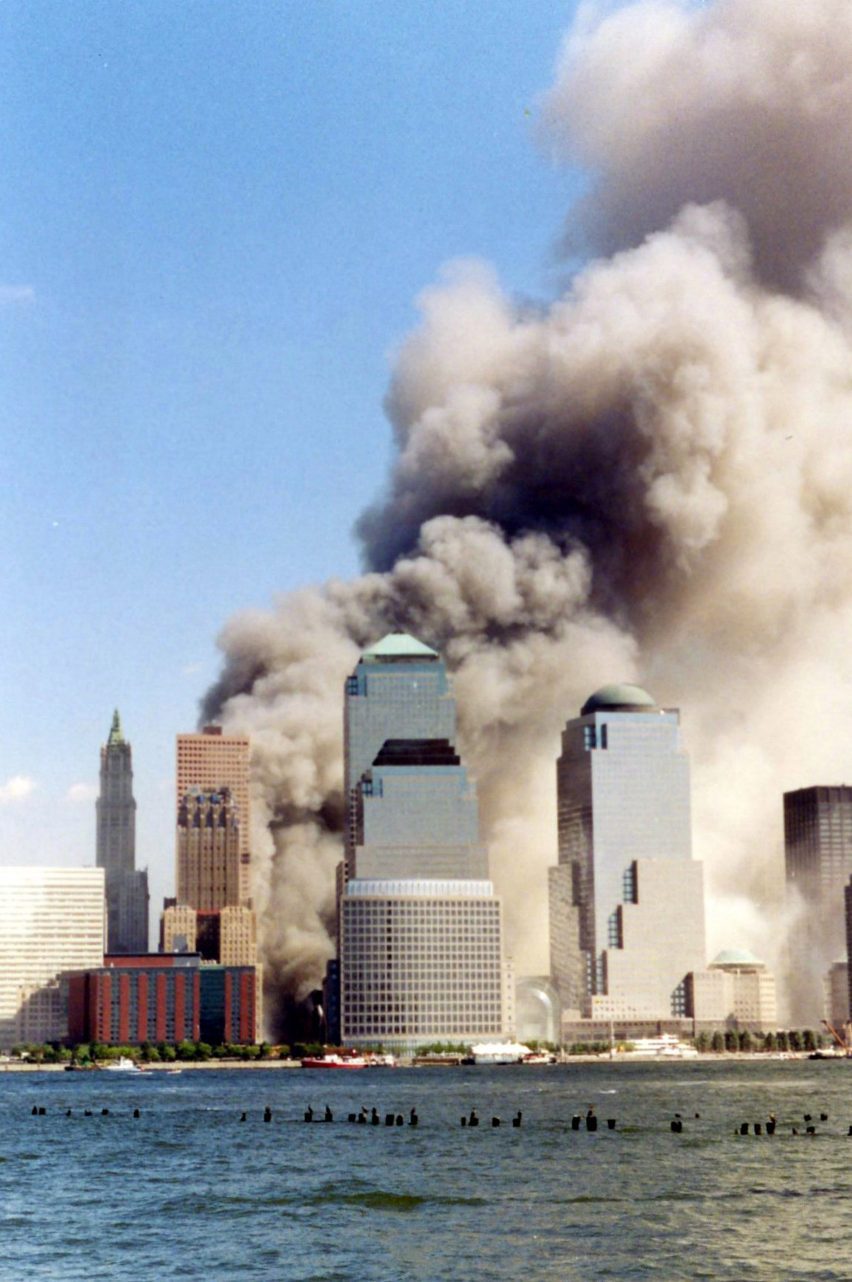
That day, a third plane also hijacked by Al-Qaeda terrorists struck The Pentagon, while a fourth crashed in a field in Pennsylvania as passengers attempted to regain control.
The four coordinated hijackings claimed the lives of 2,996 people.
"You knew immediately that something was not right"
Ung-Joo Scott Lee, the New York partner of US studio Morphosis, had just arrived at his office in the city after the first plane had struck the North Tower.
"You could see this gigantic black smoke in the sky because it was a beautiful, clear blue sky day and you knew immediately that something was not right," he told Dezeen.
In the office, he said "everybody hurtled around the conference room" where they watched the second aeroplane hitting the World Trade Center live on television.
"We thought it was the end of New York City," Lee recalled. "It was this crazy escape from New York situation that day, you were trying to run away from anything that had significant cultural value."
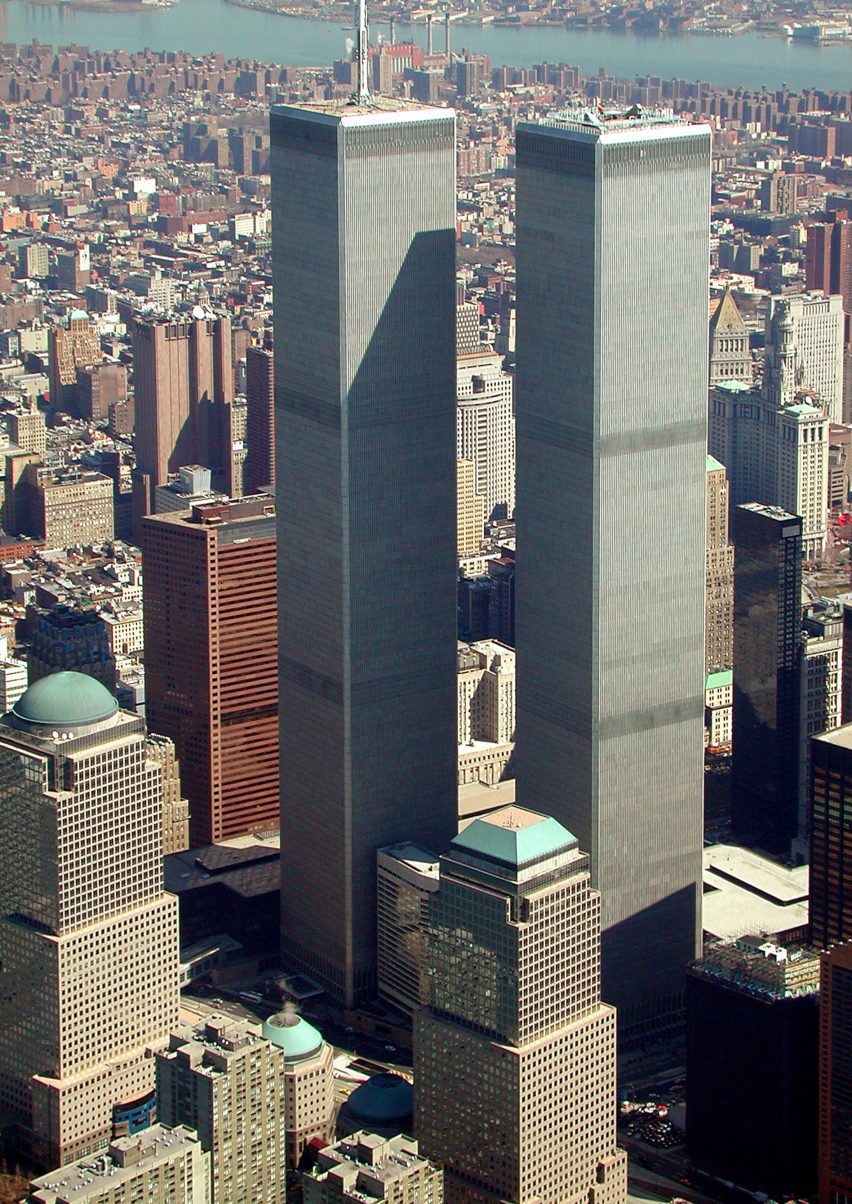
His memories are echoed by many other architects working across the US that day, such as Adrian Smith of Adrian Smith + Gordon Gill Architecture, who was "stepping into a meeting with the Trump executives" regarding Trump Tower in Chicago when he heard about the attack.
Upon hearing the news, they also turned on the television and watched the tragedy unfold.
"We saw the building collapse," he recalled. "Everybody was in shock, in shock about that and how could a building like that actually collapse," he continued.
"That was a very significant moment in time for architects and structural engineers in particular. Initially, they all wondered whether we're going to do any more supertall buildings."
Architects felt "involved with the problem"
James von Klemperer, president of Kohn Pedersen Fox, describes the event as what felt like a "direct assault".
"It had a visceral effect because you woke up and the ash was in the air," he told Dezeen. "It was this kind of inescapable feeling that you were part of the disaster."
He added that architects everywhere felt "involved with the problem because we're the ones who design buildings".
"The shock that comes with seeing the most robust and unassailable structures turned into powder was almost tangible," he explained.

Eui-Sung Yi, the Los Angeles partner of US studio Morphosis agreed, stating that the event serves as a continual reminder of the role of architecture.
"For architects, 9/11 always reaffirms in somewhat of a macabre way the relevance of architecture in terms of its role, not only in terms of symbolic nature but in terms of history," he told Dezeen.
"We're always just reminded of the responsibility, that impact on the community and the people."
"It changed everything for me"
For some architects, the impact of the event was more personal.
"At the time, my six-year-old daughter was living on the lower east side," recalled Andrew Waugh, co-founder of London studio Waugh Thistleton. "It was two days before I knew she was ok."
"I managed to get a flight about a week later and stayed in an empty hotel and the ash still thick on the ground," he continued. "It changed everything for me, I grew up."
For Dan Winey, chief operating officer at Gensler, the event made him reassess his role as an architect and "think a lot about why we do some of the things we do".
However, one of his most harrowing memories of the tragedy came in the weeks following when he went to view the site of the Twin Towers from a neighbouring high-rise.
The buildings surrounding the area had been covered in protective shrouds of fabric, he said, but because of the debris and dust, they had shredded and turned black.
"These surrounding buildings looking down on the site with this shroud waving in the wind, it looked like a veil over somebody mourning," Winey explained. "It was just... it was something that I'll never forget."
Studio Fuksas' founder Doriana Fuksas said that after the "deeply shocking and tragic day" she "tried to seize 9/11 as a new starting point from which we could restart and move forward".
"Architecture is not conceived for war or violence," she told Dezeen, "in my vision architecture belongs to everyone, it is a space for peace and participation."
She added: "Experimentation and innovation had to keep up, facing the emergency and offering new scenarios for architecture and people."
9/11 exposed "inescapable symbolism of architecture"
Italian architect Carlo Ratti, who had just joined MIT at the time of the attack, said he was struck most by how the tragedy "exposed the inescapable symbolism of architecture".
"It is not unusual for a casus belli to cast the built environment at the centre of the scene," he told Dezeen.
"However, the way in which the World Trade Center towers embodied the American values, as well as the sheer scale of destruction – not to mention how fast the images were broadcast globally – made this event unique on so many levels," he explained.
Founder and director of FOOD Dong-Ping Wong recalled a similar feeling from when he watched the events unfold with his roommates as an architecture student.
"I never understood how powerful the symbolism of buildings could be until that point," he told Dezeen. "That it could directly result in life or death."
"That the destruction of a building and what it represented could change an entire country's philosophy on nationalism and foreignness for decades."
Trust "will take decades to rebuild"
At the time of the attack, Alexandra Hagen was a newly employed junior architect at White Arkitekter, where she now holds the position of CEO.
She remembers 9/11 as "one of those markers in time that so clearly has a defined before and after" and believes that its impact on the built environment is still clearly felt today.
"In a few hours it robbed us of trust that will take decades to rebuild," she said. "Doors to many public spaces that were previously open to explore were locked for security reasons and have since not been opened."
She continued: "Where trust was damaged it was replaced with surveillance and control. However, it is only through rebuilding trust that we will be able to maintain the open and democratic society that we strive for."
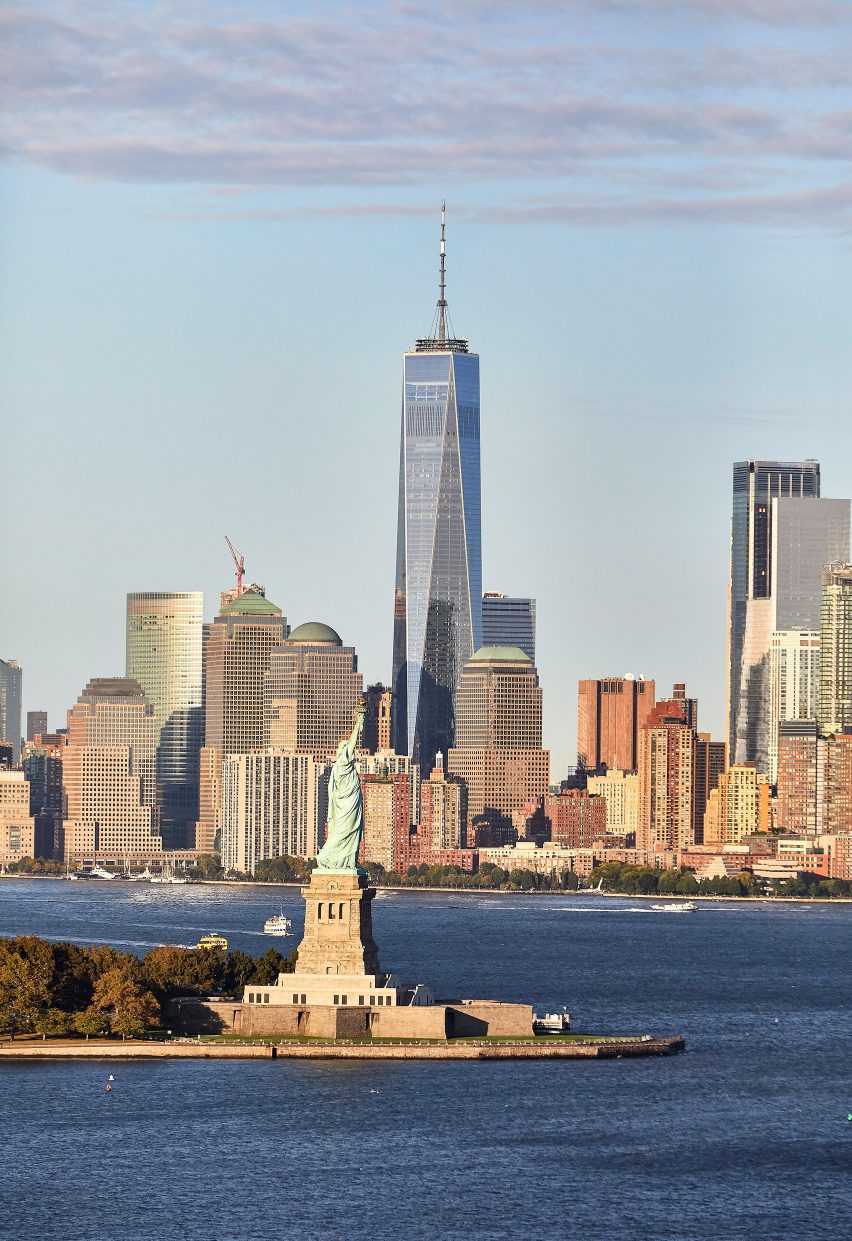
For OMA partner Reinier de Graaf, "the real significance of the moment only manifests in hindsight".
"At the time of the attacks, I was in Brussels presenting our proposal for the Image of Europe," he told Dezeen, "I remember the presentation being interrupted by someone storming into the room holding a bunch of printed news from the internet."
"Since 9/11, the US has progressively lost its global dominance facing China as an ever-more assertive contender," he explained. "In the context of an increasingly polarized world, Europe was and is an important project to pursue."
Ground Zero architects felt "moral obligation to do good"
Despite the initial feelings that the tragedy could lead to the end of New York, just two years after the attack, Daniel Libeskind won a competition to masterplan the rebuilding of the 16-acre World Trade Center site.
One of the first buildings to be constructed there was the One World Trade Center, which was completed by Skidmore, Owings & Merrill (SOM) in 2014.
SOM partner Ken Lewis, who was project manager for One World Trade Center, describes working on the tower as "one of the greatest honours" of his career.
"It was an emotional experience in every way," he told Dezeen. "It had to be a symbol of New York's resilience in the face of disaster, a building that replaced the void in our skyline, as well as one of the most advanced towers in the world in terms of technology, life safety, and security."
Georgina Robledo, a partner at Rogers Stirk Harbour + Partners who led the design of the 3 World Trade Center tower, described working on Ground Zero as "emotional" and "one of my top experiences".
Meanwhile, the director in charge of 4 World Trade Center, Gary Kamemoto of Maki and Associates, said the project was "a tremendous honour".
"We felt such a moral obligation to do good for the general public," he told Dezeen.
"Out of the tragedy has come a very positive outcome"
Kamemoto added that, while 9/11 was a tragedy, he sees "something wonderful that has emerged from it".
"The beauty of the redevelopment was the memorial park... it is not a cemetery, it's actually a public asset," he explained. "We do miss the great architecture that Minoru Yamasaki had built, but out of the tragedy has come a very positive outcome."
British architect Thomas Heatherwick said: "Twenty years on, either despite 9/11 or maybe directly in defiance of it, the city's special confidence seems to have come back".
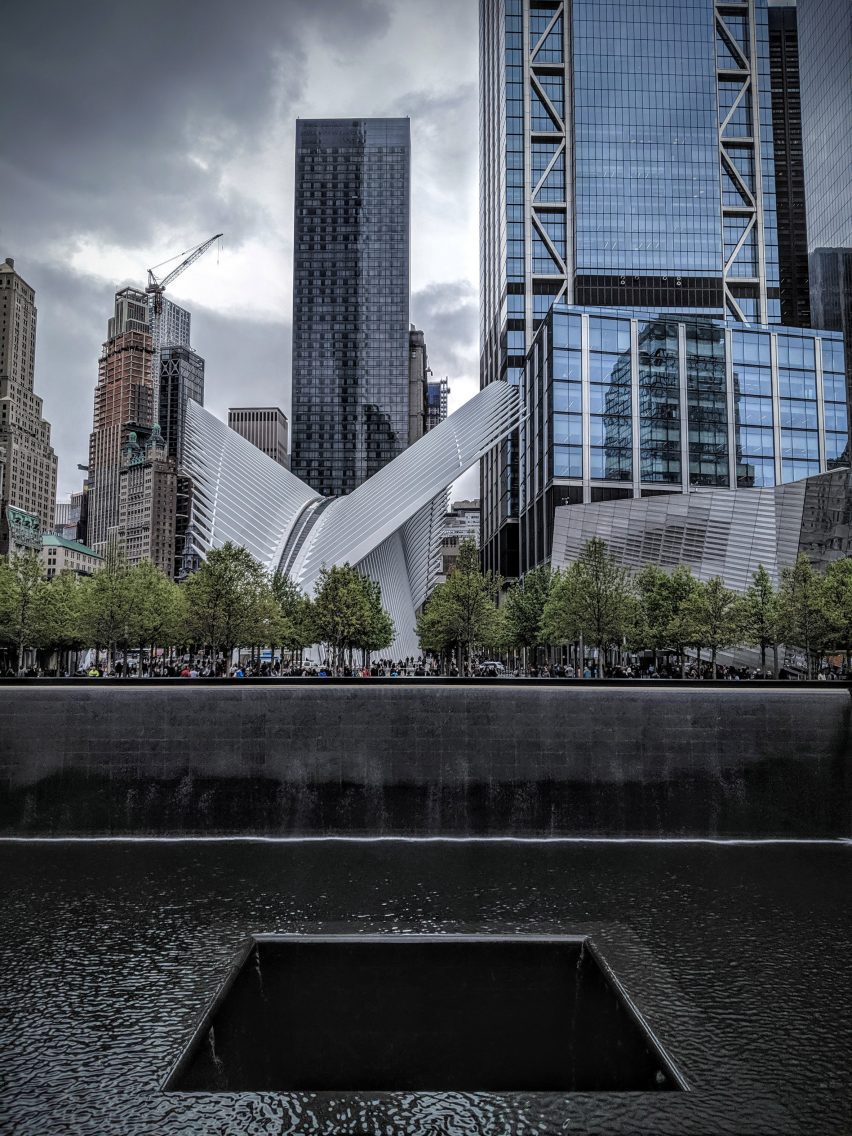
He added that the attacks illuminated the value of shared community spaces, which have become more important than ever.
"The only light that can come from the shadow of a horrific tragedy such as 9/11 is that perhaps we can all realise the intense importance of cherishing each other a little bit more," Heatherwick said.
"And in this new time of global loneliness, where the digital realm can unwittingly keep us physically apart from each other, the role of shared space where we can all truly see each other is more critical than ever."
9/11 anniversary
This article is part of Dezeen's 9/11 anniversary series marking the 20th anniversary of the terrorist attack on the World Trade Center.
The main image is by Michael Foran via Wikimedia Commons.
(Sources: DeZeen)











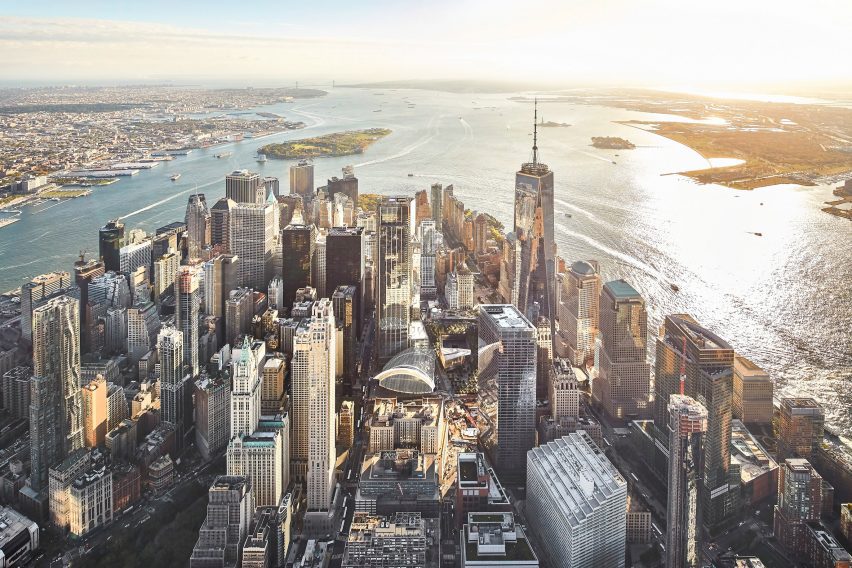

Đăng nhận xét